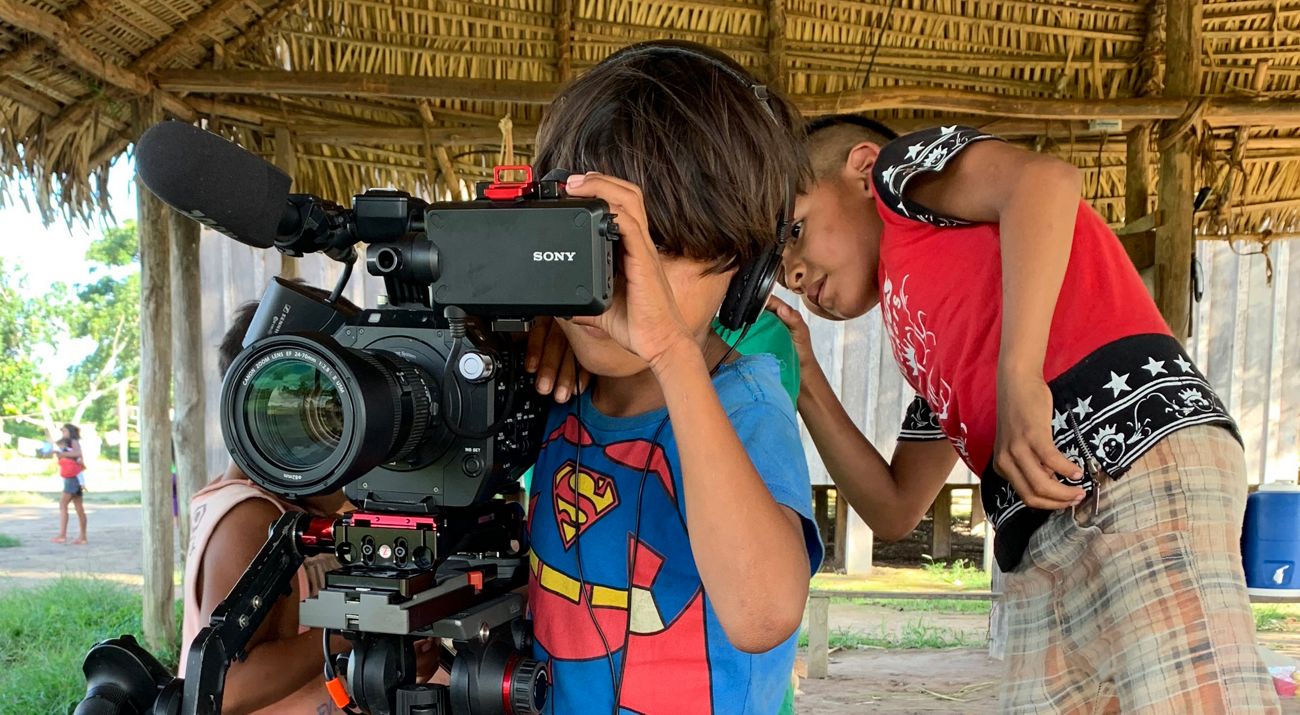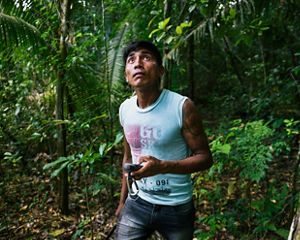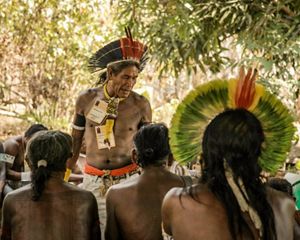Amplifying indigenous voices
Indigenous communication support strengthens communities and local organizations’ management of their territories and the fight for rights.
“Communication is important for the Indigenous movement so that we
can show our communities’ struggles,” says Cristian Wariu, an Indigenous
youtuber who produces social network content that reinforces the
diversity of Indigenous Peoples in Brazil and describes their struggles.
Son of leaders of the Xavante people from Mato Grosso state, Cristian
says that “communication also makes it possible for us to show our true
face, presenting our diversity and fighting the stereotyped ideas of
Indigenous People that have been reinforced for a long time.”
With support from The Nature Conservancy (TNC), in partnership with the Coordination of Indigenous Organizations of the Brazilian Amazon (COIAB) and a joint production with Coletivo 105, Cristian was one of those responsible for starting the Guerreiros Digit@is initiative. It all happened through the training geared to Indigenous People for creating digital content and using communication tools and platforms. In addition to contributing to the technical training of new Indigenous communication professionals, the goal was to strengthen a network of communicators who are part of the Federation of Indigenous Peoples of Pará (FEPIPA), Federation of Indigenous Peoples of Mato Grosso (FEPOIMT) and Partnership of Indigenous Peoples and Organizations of Amapá and Northern Pará (APOIANP).
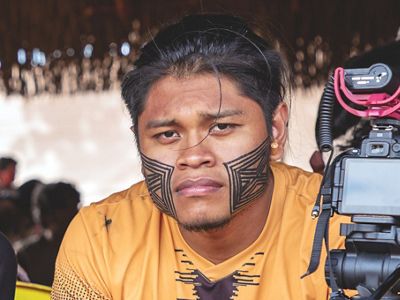
Classes and virtual meetings took place with young representatives of 20 Indigenous Peoples from Mato Grosso, Pará, and Amapá states over seven months. Course content included an introduction to communication, "ethno-media" and the importance of Indigenous communicators and communication as a tool for protecting rights. The training also included topics such as photography, digital journalism, graphic design, and social media, in addition to the basic principles of video and podcast production. The program also covered the creation of digital communication materials, ensuring that classes catered to students with different backgrounds, including more experienced Indigenous communicators as well as young people and leaders who were just beginning their work in that field.
Quote: Cristian Wariu
Communication also makes it possible for us to show our true face, presenting our diversity and fighting the stereotyped ideas of Indigenous People that have been reinforced for a long time.
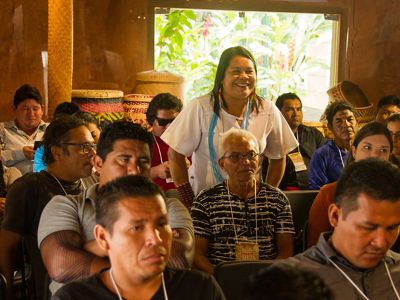
Simone Karipuna is the APOIANP coordinator and already sees the benefits of working with trained Indigenous communicators. “Guerreiros Digit@is encouraged our youth to improve their digital media skills. The use of technology and communication is very important to us. It guarantees there is room for our point of view and the chance to present our thoughts, our culture, and our struggle,” says Simone.
The network of communicators has already launched the Guerreiros Digit@is channel on Instagram, which has compiled material the group produced. The idea is to have the network consolidate itself as a communication tool for Indigenous organizations and be strengthened by continuing-education actions among trained Indigenous people. Also, that it promotes incentives and mentoring for content production and participation in public call for proposals aimed at Indigenous communicators. A reference is the work carried out by Mídia Índia, a collaborative communication network on Indigenous issues that is gaining ever more space on social networks.
The idea for the course arose when the COIAB Network observed the longstanding and ever-persistent need to train communicators who can contribute to communication among Indigenous Peoples but also take information from villages to the outside world. This flow of communication is essential, especially during the pandemic when the circulation of Indigenous People has been reduced to prevent the dissemination of COVID-19. That has impacted external communication but has also made it impossible to hold important face-to-face meetings and assemblies to discuss essential issues related to the management of Indigenous Lands.
Quote: Simone Karipuna
The use of technology and communication is very important to us. It guarantees there is room for our point of view and the chance to present our thoughts, our culture, and our struggle.
Since the pandemic has limited Indigenous Peoples’ movement, they have had to adapt to participate in virtual events, ensuring their voices are heard in important discussions. In September 2020, the 7th Terra do Meio Extractivist Week took place, bringing together virtually, over the internet and radio, Indigenous and representatives of traditional communities, companies, and local governments to discuss bioeconomy and sustainable-use activities in the communities that are part of the Terra do Meio Network of Canteens, in Altamira and the Middle Xingu region in Pará state.
The internet was also essential to FEPIPA's general assembly held at the beginning of 2021. The event had to be postponed several times and that delayed the updating of the organization's statute and registration, as well as the election of the new executive committee. With support from TNC, the group held its meeting on January 25 and around 80 people attended, electing their new representatives and validating the documents via digital signatures. Especially in a large state such as Pará, having the assembly meet via the internet enabled the participation of more representatives than would have been possible in a face-to-face event and costs for travel and other logistical expenses were lower.
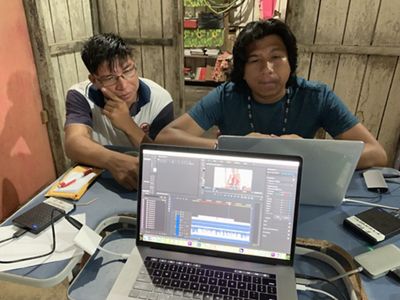
This new interface for holding debates helps reduce the long distances in the Amazon. “It makes it easier for us to be closer to our support base because communication reaches the villages,” emphasizes Simone Karipuna. A viable solution that minimizes risks during the pandemic and keeps the debates on the management of Indigenous Lands on schedule.
Indigenous leaders and organizations’ support for innovation in the face of new challenges, through the use of new tools, such as training Indigenous communicators and adapting to virtual meetings, is another step by Indigenous Peoples to strengthen their tireless struggle to protect their rights and guarantee their autonomy in managing their territories. “We need to show that we exist in this country and that we have resisted to this day, fighting for our territories. A very beautiful fight that has always existed but was never communicated very well,” concludes Cristian.
